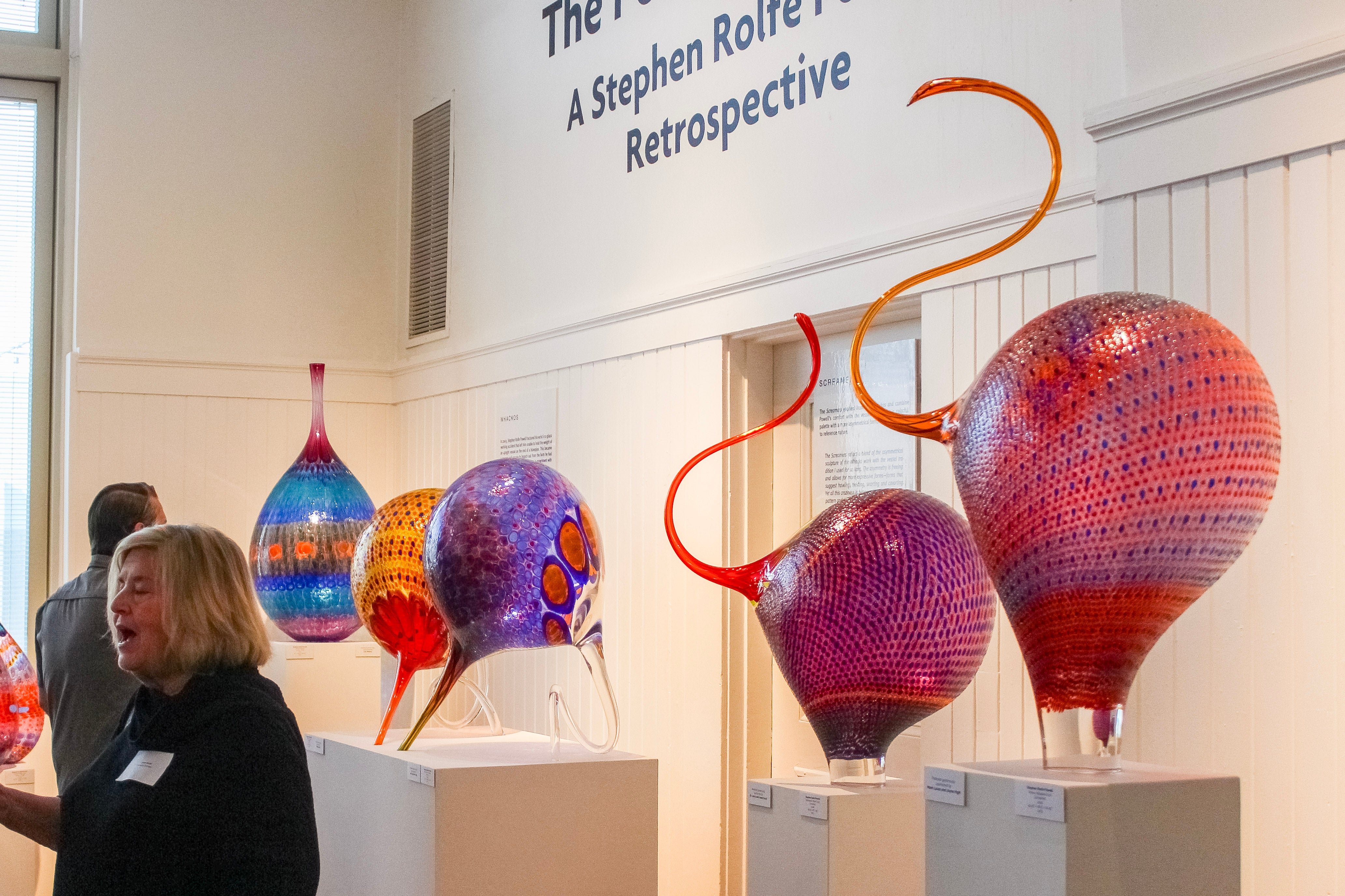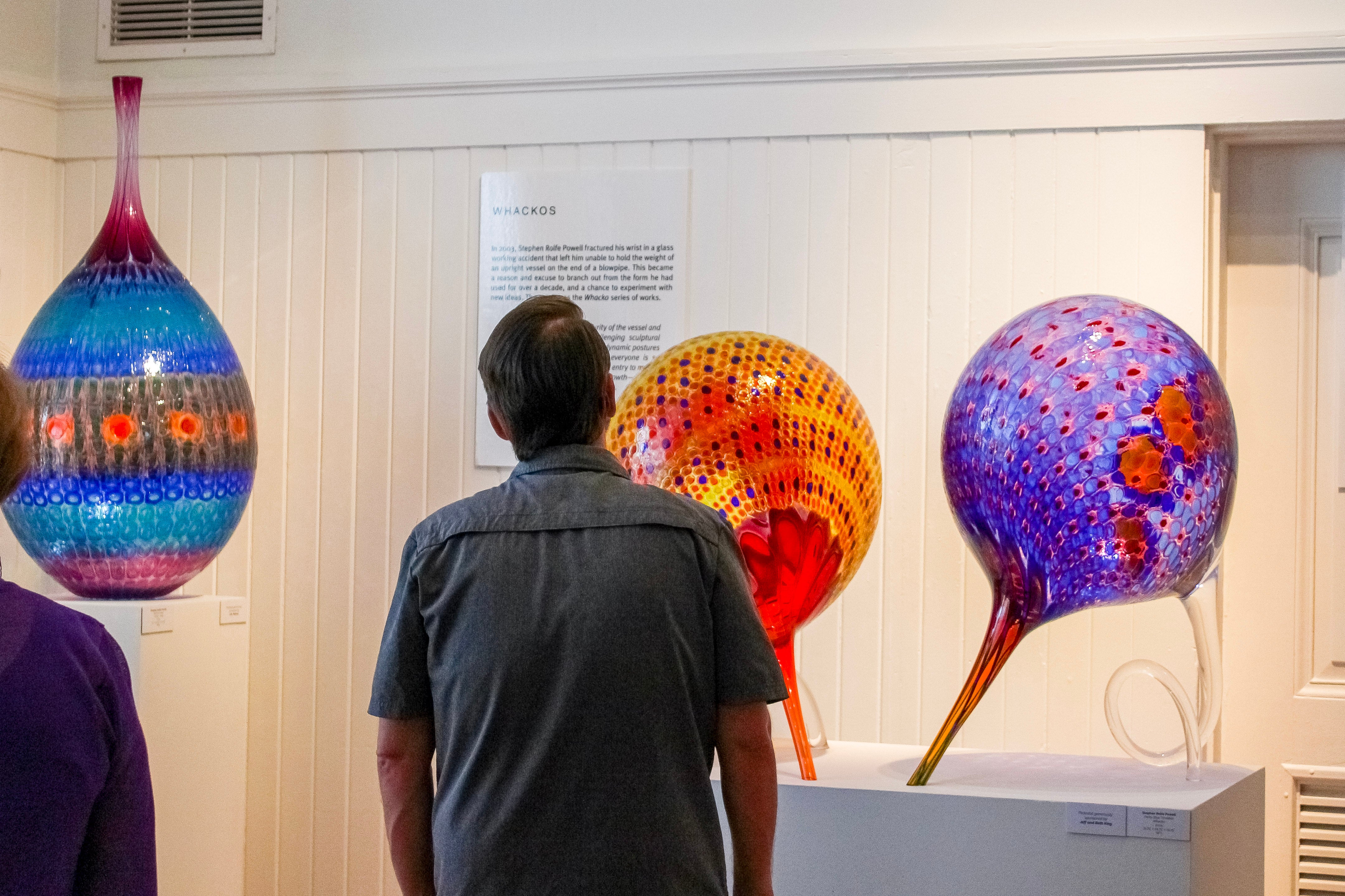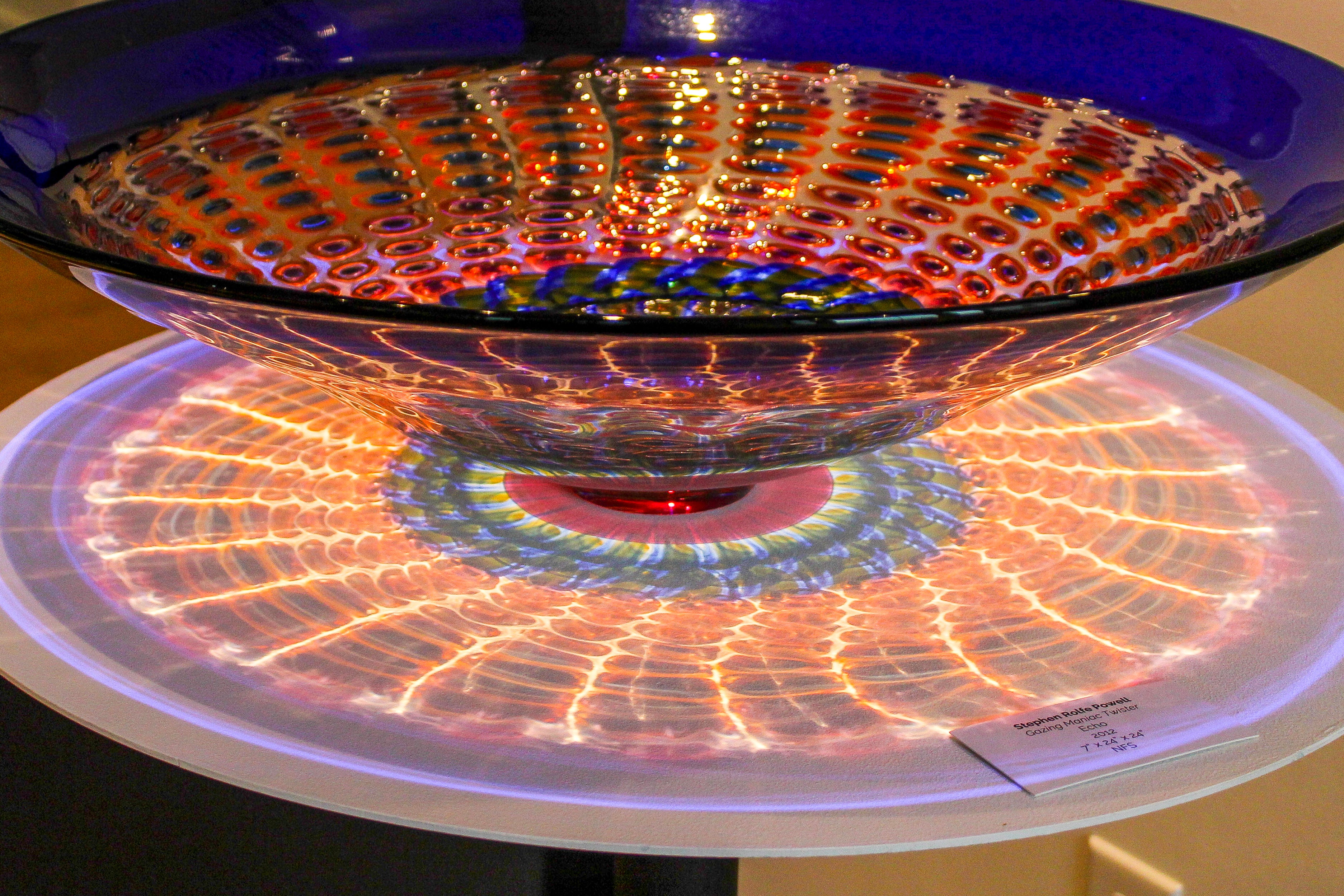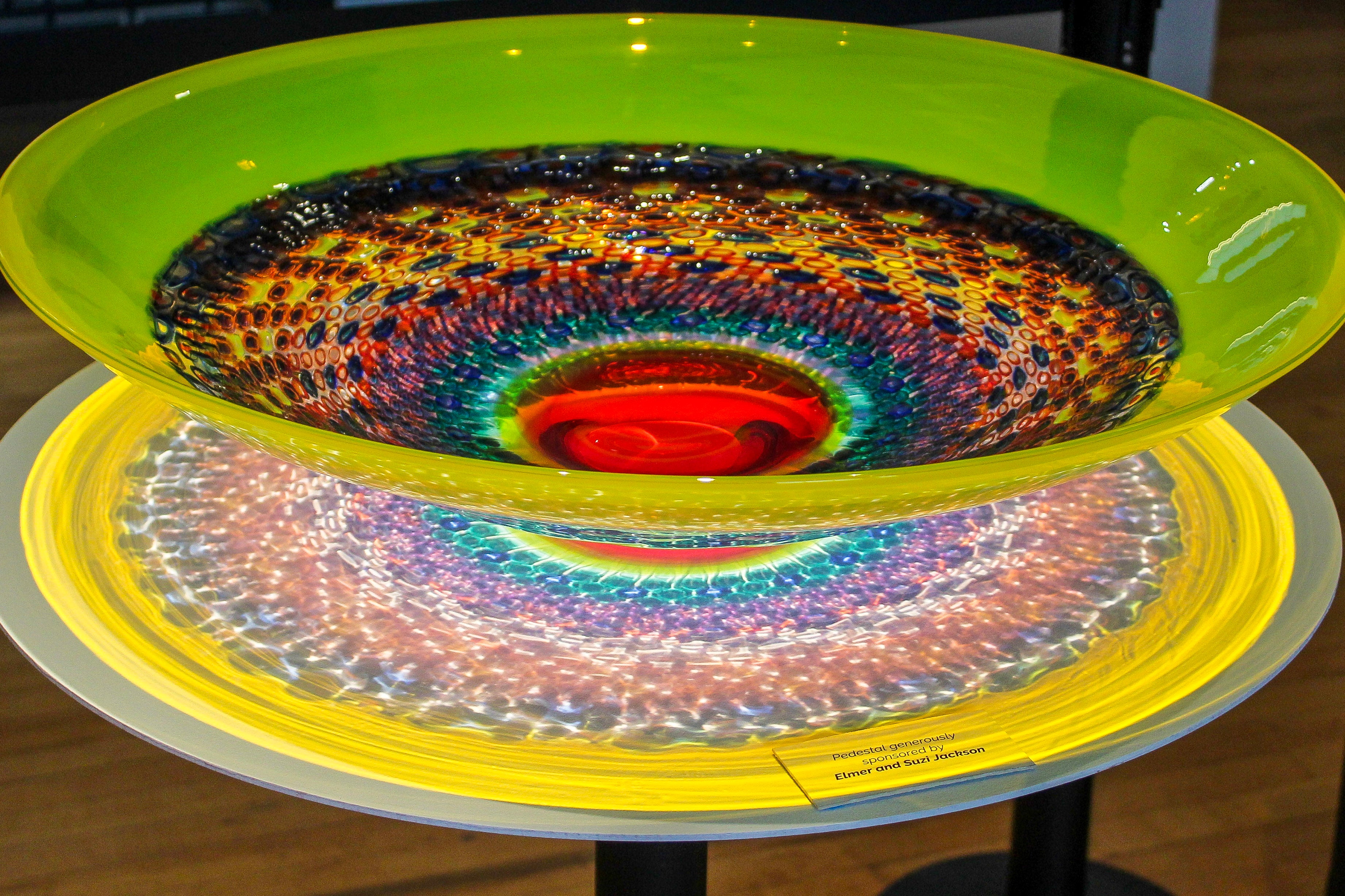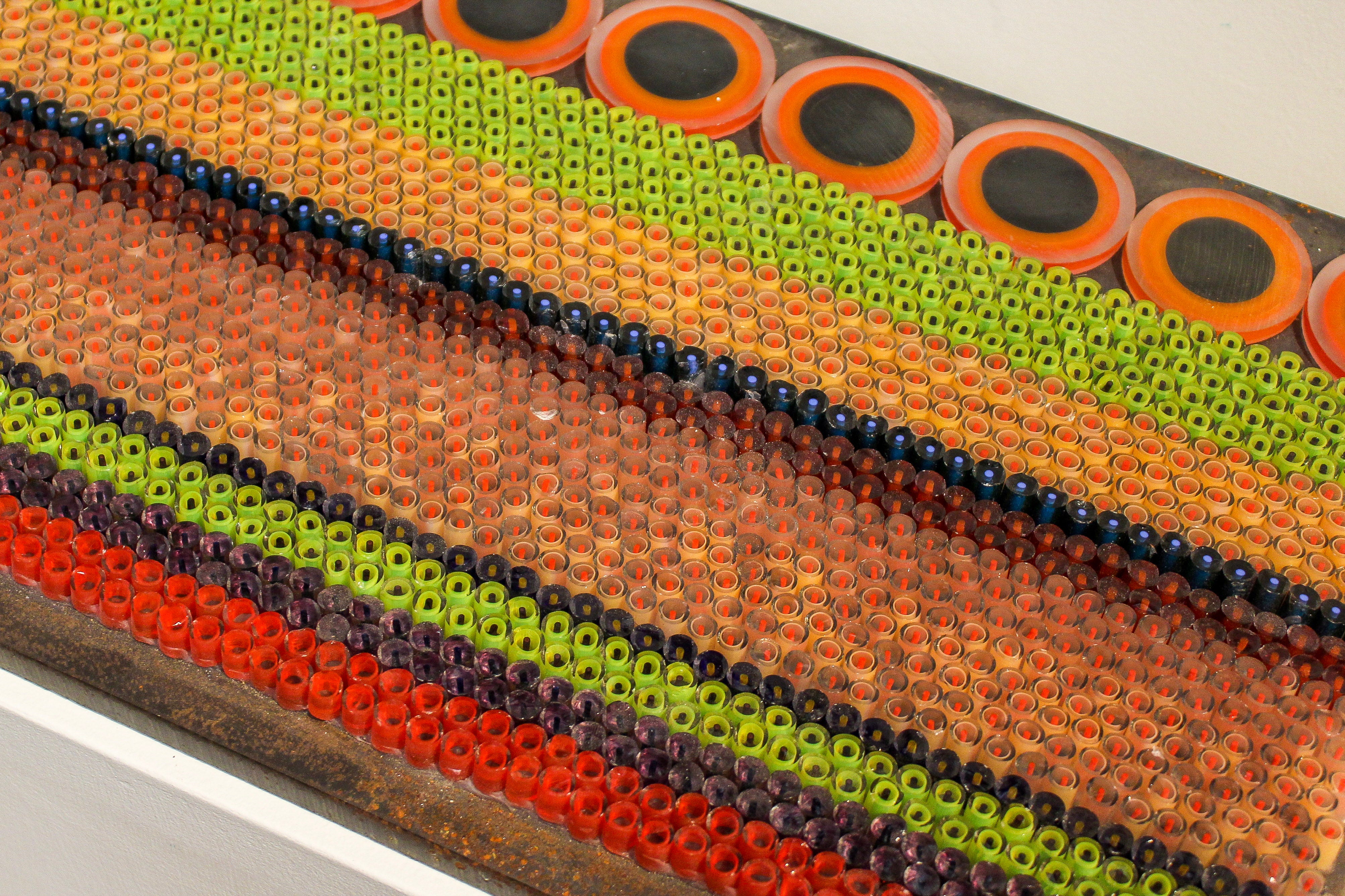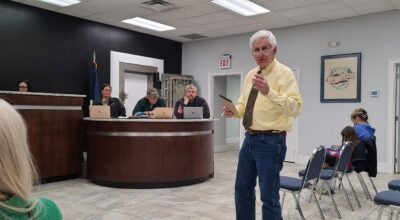Stephen Rolfe Powell exhibit details the creative arc of a master glassblower
Published 9:00 am Tuesday, September 6, 2022
The first view of the exhibit is breathtaking – radiant colors, cascading patterns, and pools of glowing light beckon visitors into the Grand Hall of Art Center of the Bluegrass. This is “The Power of Color: A Stephen Rolfe Powell Retrospective,” on exhibit through October 29.
Art Center Executive Director Niki Kinkade said, “Stephen was not just a friend and patron, he was an artist of the highest caliber, relentless in his pursuit of artistic excellence. We are honored to be able to host this retrospective exhibit in the Art Center he helped to found.”
The centerpiece of the show is 26 major pieces representing the key phases of Stephen’s artistic career, which spanned four decades. Glass was not Powell’s first medium, however. He began his creative journey in painting, inspired by the Abstract Expressionist and Color Field generation of painters. Those painters were interested primarily in color, form, shape, and texture and the emotions those colors and forms could produce. In addition to large, colorful abstract paintings, Powell’s early work also included raku-fired clay pieces in vivid colors. The retrospective exhibit includes examples of Powell’s early ceramic work.
While undertaking a graduate degree in ceramics, Powell had the opportunity to work with glass and described it later as “love at first sight.” Glassblowing had the complex process and physicality he enjoyed with clay, but with the added ability to interact with light and colors in ways that ceramics cannot.
In 1985, Powell founded the glass program at Centre College. His first major series of work, created from the early 1990s to about 2002, were large, upright forms which he called “Teasers.” The Teasers reference ancient vessel shapes and evoke organic forms with their rounded double lobes. The pieces were created by using canes of glass known as “murrini,” each of which was hand-made by Powell and his crew by layering hundreds of colors together. Each glass piece, in turn, utilized anywhere from 2,500 to 3,000 murrini, organized into varying bands of color. The resulting pieces could weigh up to 30 pounds!
Powell’s titles for the Teaser series were playful, even sexually suggestive. With names like “Honey Nippled Gaze,” “Copious Solar Lips,” and “Licking Purple Manic,” he sought to capture the personality, energy, and gesture of each piece.
In 2003, Stephen fractured his wrist in a glass working accident that left him unable to hold the weight of an upright vessel on the end of a blowpipe. The injury became a reason and excuse to branch out from the form he had used for over a decade, and a chance to experiment with new ideas. The result was the “Whackos” series of works. In 2005, Powell described his new series, explaining that the Whackos “abandon the security of the vessel and allow me to explore more challenging sculptural concerns.” The new series suggested the dynamic postures of animals.
The “Screamers” evolved from the Whackos and combined Powell’s comfort with the vessel form and his colorful palette with a more asymmetrical bent, one that continued to reference nature. For Powell, the asymmetry of the Screamers was freeing. In 2006, he said the series “allows for more expressive forms – forms that suggest howling, twisting, snorting and cavorting. Yet all this craziness is tempered by the order of the pattern and the physical balance of the piece.”
In 2011, Powell started a series of stunning bowls – dubbed “Echoes” – that are, in many ways, the most conventional of all his forms. However, these are far from ordinary bowls. For Powell, these works functioned less as vessels and more as an exploration of the refraction of light as it passes through the melted glass swirls of murine to create patterns and colors on the surface beneath to “echo” the object itself. As such, the bowls appear to float and hover upon its mirror image.
At the time of his death in 2019, Powell was working on a new series he referred to as “Zoomers.” The largest and most physically imposing of all his work, the mighty glass panels stand 5’ tall. The Zoomers feature a honeycomb pattern of colors that represents the way nature grows from circular forms to hexagons.
In 2019, as the Art Center undertook a major rebranding effort (moving from “Community Arts Center” to its current name “Art Center of the Bluegrass”) the Board of Directors undertook a fundraising effort to acquire two of Stephen’s pieces for the organization’s permanent collection. The selection of two Zoomers was made collaboratively with Stephen himself, who selected the pieces and brought them to the Art Center for a “test run” to confirm the choice and discuss lighting and installation needs. Unfortunately, Stephen died before they were permanently installed, but their presence at the entrance of the Art Center serves as an enduring tribute to his legacy and gifts to the community.
Multiple examples of all five of Stephen’s major series are represented in the retrospective exhibit. An upstairs gallery showcases photographs and press coverage from throughout his career, along with examples of a murrini layout and tools used by Stephen in the creation of his work. The show will be on display through October 29.
“This exhibit is very meaningful to all of us here at the Art Center,” says Executive Director Niki Kinkade. “It is a rare opportunity for our community to see examples of the full expanse of Stephen’s immense body of work – and an opportunity for us all to remember and honor his creative gifts to our community.”
Visit the Retrospective at Art Center of the Bluegrass, 401 West Main Street, Danville, Kentucky from August 26 – October 29, 2022. Open Tuesday – Friday, 11am – 7pm and Saturday, 10am – 5pm.


